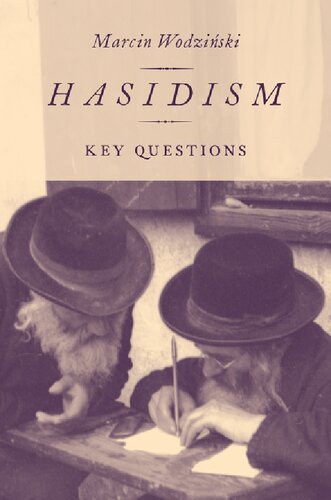

Most ebook files are in PDF format, so you can easily read them using various software such as Foxit Reader or directly on the Google Chrome browser.
Some ebook files are released by publishers in other formats such as .awz, .mobi, .epub, .fb2, etc. You may need to install specific software to read these formats on mobile/PC, such as Calibre.
Please read the tutorial at this link: https://ebookbell.com/faq
We offer FREE conversion to the popular formats you request; however, this may take some time. Therefore, right after payment, please email us, and we will try to provide the service as quickly as possible.
For some exceptional file formats or broken links (if any), please refrain from opening any disputes. Instead, email us first, and we will try to assist within a maximum of 6 hours.
EbookBell Team

4.1
30 reviewsHasidism is one of the most important religious and social movements to have developed in Eastern Europe, and the most significant phenomenon in the religious, social and cultural life of the Jewish population in Eastern Europe from the eighteenth century up to the present day. Innovative and multidisciplinary in its approach, Hasidism: Key Questions discusses the most cardinal features of any social or religious movement: definition, gender, leadership, demographic size, geography, economy, and decline. This is the first attempt to respond those central questions in one book.
Recognizing the major limitations of the existing research on Hasidism, Marcin Wodzinski's Hasidism offers four important corrections. First, it offers anti-elitist corrective attempting to investigate Hasidism beyond its leaders into the masses of the rank-and-file followers. Second, it introduces new types of sources, rarely or never used in research on Hasidism, including archival documents, Jewish memorial books, petitionary notes, quantitative and visual materials. Third, it covers the whole classic period of Hasidism from its institutional maturation at the end of the eighteenth century to its major crisis and decline in wake of the First World War. Finally, instead of focusing on intellectual history, the book offers a multi-disciplinary approach with the modern methodologies of the corresponding disciplines: sociology and anthropology of religion, demography, historical geography and more.
By combining some oldest, central questions with radically new sources, perspectives, and methodologies, Hasidism: Key Questions will provide a radically new look at many central issues in historiography of Hasidism, one of the most important religious movements of modern Eastern Europe.